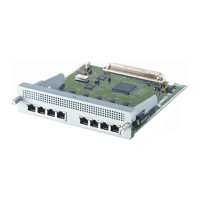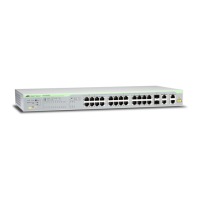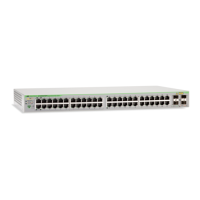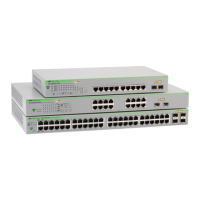Configuring SuperLoop Introduction
4-135
Software Reference for SwitchBlade x3100 Series Switches (Layer Two Switching)
• The SBx3112 cannot be configured as either the “Controller” or the “Partner” nodes which are located on
either end of the common link, anywhere within any of the rings sharing a common link that are running
Extreme Networks proprietary “EAPS Shared-Ports protocol”.
4.6.11.3 SuperLoop with Complex Topologies (EPSR Logical Domain Types)
As a result of the SuperLoop feature, there are three types of EPSR logical domains:
• Non-SuperLoop Domain -The configuration rules are:
• A protected VLAN can be shared by two or more domains, but a Common Link is not allowed.
• A Common Link cannot be configured between two systems.
• Non-peer SuperLoop Domains - In this configuration, a SuperLoop domain is one which is part of a
physical ring segment that shares a Common Link with another ring segment. However, these domains are
considered as non-peer because each domain does not share the same protected VLANs with the other(s).
From the protocol viewpoint, this behavior is the same as the Non-SuperLoop.The priority of the shared
ring port of the domains is set to 0.
• Peer SuperLoop Domains - This is one which is part of a physical ring segment that not only shares a
common link with another segment but also has the same set of protected data vlans as all the other “peer
SuperLoop” domains in the SuperLoop topology part (the SuperLoop nodes is part of) of the intercon-
nected EPSR access network. Moreover, the priority value of the shared ring port must be set greater than
0 and a rank of 0 or 1. (A description of rank is included in the next subsection on the CLI overview.)
4.6.12 Configuring SuperLoop
This section describes complex topologies. The control and data VLANs are, to reduce possible confusion, not
shown.
Refer to Figure 4-15 for an example of Peer SuperLoop Domains with disjointed ring segments. Because there
are two separate Common Links, they can have their own set of priorities. Overlap of priority numbers is not
an issue. Since they are still Peer SuperLoop domains, all five rings segments share the same set of data VLANs.
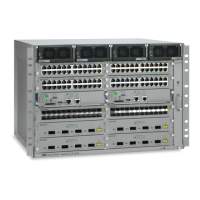
